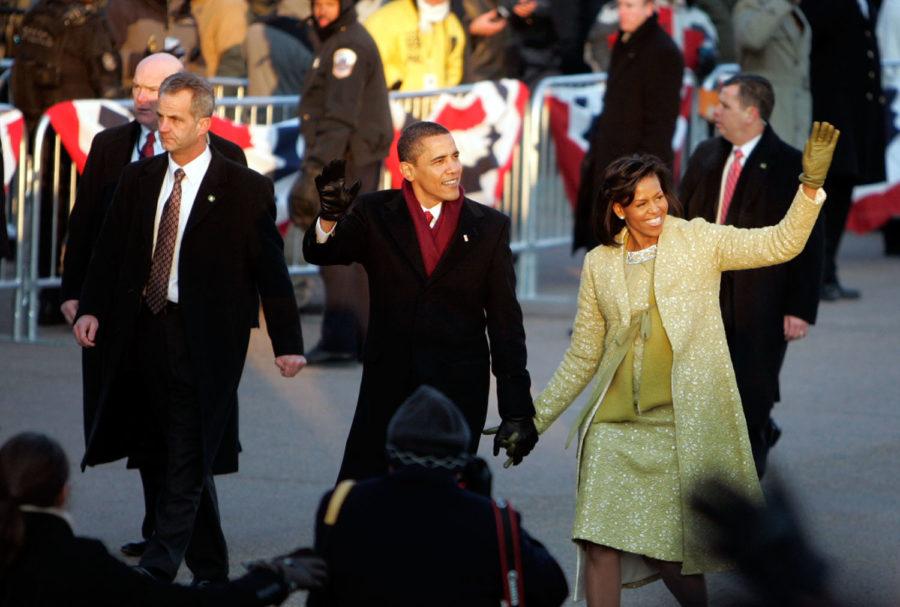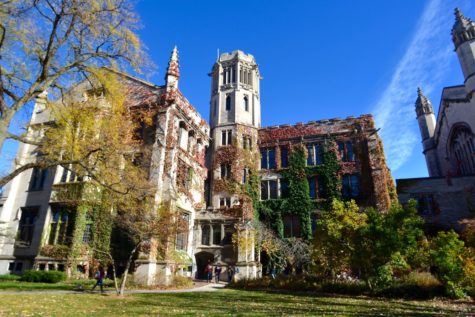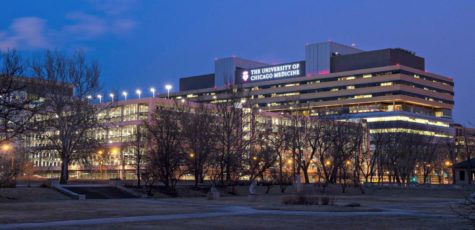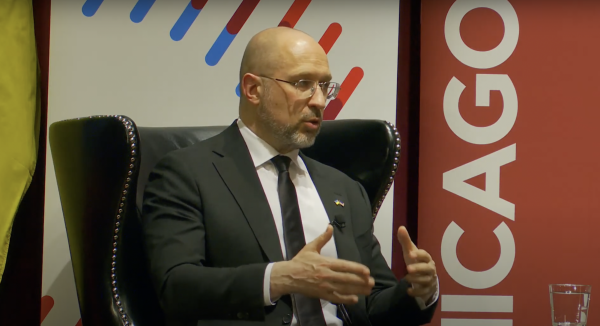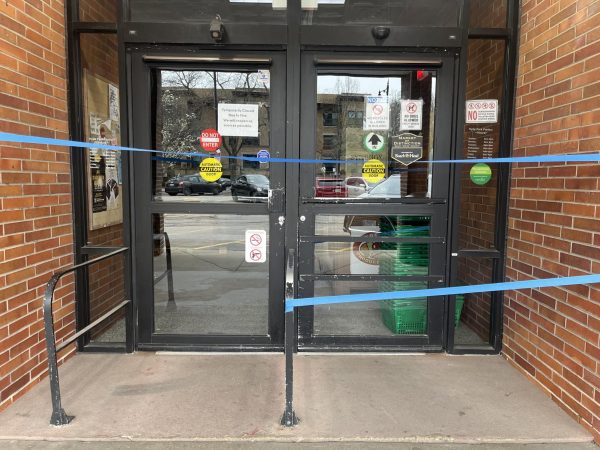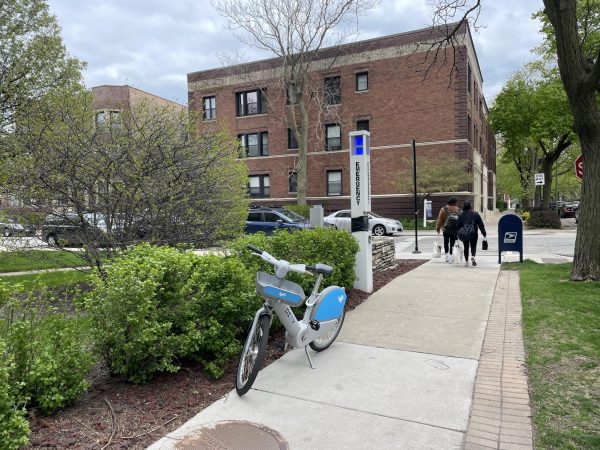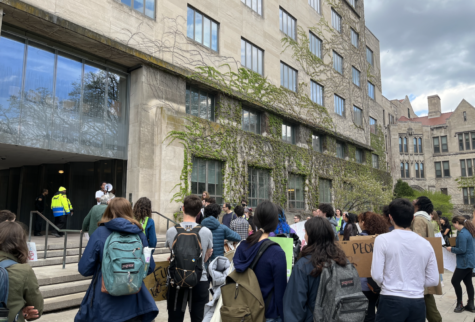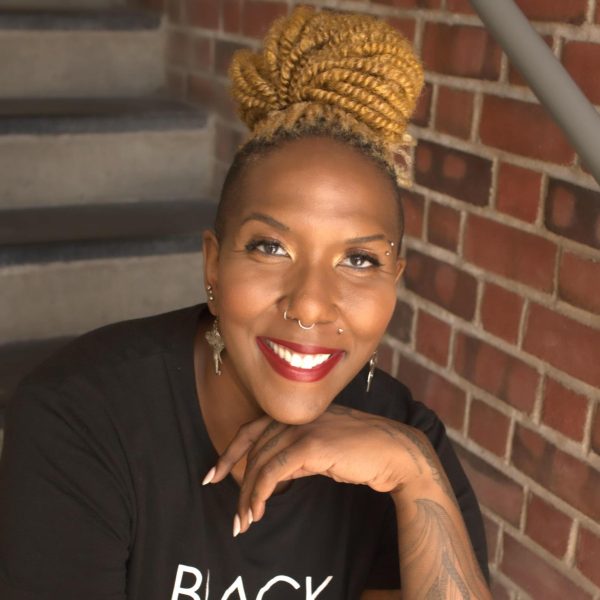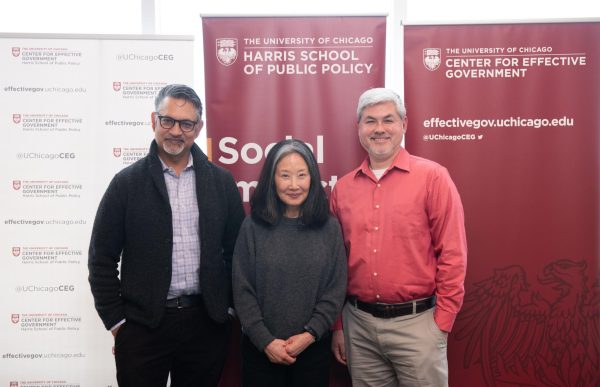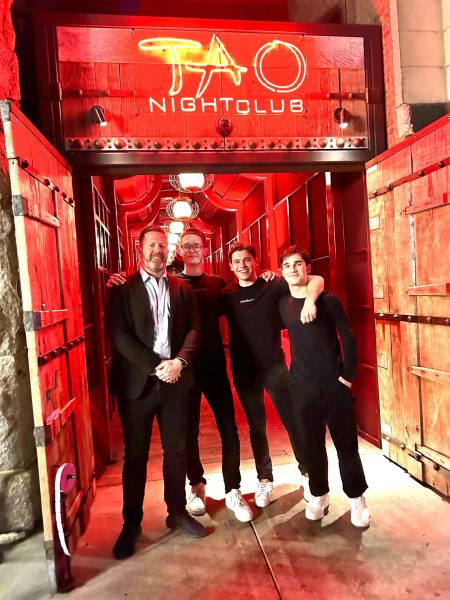Maroon Photographer Used UofC Connections (and a Ladder) to Shoot Obama’s ’08 Victory Speech in Chicago
Chris Salata covered Obama’s 2008 campaign extensively for the paper.
January 10, 2017
One night shortly after the 2016 election, while editing in The Maroon’s basement office, I pulled out the 2008 archives and flipped to the November 7 issue.
I saw the headline I expected: “Obama, former law professor, wins presidency.”
The front page photo, however, was remarkable—it showed a young-looking, in-focus Barack Obama waving to a Grant Park crowd with blurred American flags fluttering in the foreground. It might as well have been the front-page photo of the Chicago Tribune.
Maybe it was the front-page photo of the Tribune, I thought. No way a Maroon photographer got something this good—this must be a professional photograph, right?
But the photo tag read: “Chris Salata/Photo Editor.”
Last weekend, as I was applying for credentials to cover Obama’s farewell address in Chicago, I was reminded of Salata’s front page photo. So I gave Chris a phone call.
He told me the story behind what might well be the best election-night photos ever taken by a student journalist.
Salata: At that particular time, the primary photographer for the University was a guy by the name of Dan Dry. We met early on during my career at The Maroon, and he kind of took me under his wing. He became a real mentor to me to this day. Dan was right there with me for a lot of the stuff that I did with Obama and especially Election Night. He was shooting for the University; I was shooting for the student newspaper.
Election Night was really difficult to cover. The way those events work—and it’s kind of the exception rather than the rule—is the media basically pays to cover it. They cover the campaign’s costs. It’s like when you travel on Air Force One; you get billed and you pay. You’re kind of zeroing out the balance sheet.
It turns out it was very expensive to erect a tent and risers and what-not in the middle of Grant Park. So, a proper riser spot to photograph Election Night was something like $600 or $700. Dan couldn’t get anybody at the University to pay for it, and I couldn’t get anybody at The Maroon to pay for it—we had even less money than the University.
But we ended up getting like five or six credentials for The Maroon, which was astounding to me—let’s just put it that way. But that only guaranteed access to the site; it didn’t get me a clear line of site to be able to photograph Obama. We were cordoned off probably a couple hundred feet from the podium.
So what we did—which I thought was genius—we actually went to Midway Studios, the art building on campus at the time, and borrowed two big six or eight foot ladders and strapped them to the top of Dan’s car. We drove down to Grant Park and used our credentials to get in. Broadcast takes so many hours to set up, so they typically made those sites available day-of, and then they’d lock it down for like two hours and do the full Secret Service sweep. Then they’d let you back in.
So we went in right before the Secret Service sweep, and we found a good spot in-between the risers and put up our ladders right against this fence. Dan and I looked at each other and we’re like ‘OK, the Secret Service may take these things and we’ll never see them again and we’re going to owe Midway studios two new ladders.’
Miraculously, they stayed put. I think I may have zip-tied them, but we came back after the Secret Service sweep to set up, and they were still there. Consequently, we were basically the only two photographers who weren’t credentialed for riser access to get a passable shot of Obama. If you didn’t have the height from the risers or if you didn’t have the height from the ladders like we had, you were staring at the backs of like 500 people. And those damn American flags covered him up constantly.
When did you get started with The Maroon, and how many times did you photograph Obama?
I timed it pretty well. I started at The Maroon in spring 2007. I got to see Barack Obama run for president and eventually win, and I covered him for The Maroon a couple times. The first time I photographed him was on Super Tuesday in 2008. He actually was voting at his local precinct in Chicago, which was the 23rd precinct at Beulah Shoesmith Elementary School in Kenwood. It was probably five minutes from The Maroon office. If I remember correctly, I think I walked there. I stood out in the cold with a bunch of other photographers. He had Secret Service protection, but it was much less formal. I don’t even think there was any credentialing. We were just herded off in one area and stood there waiting in the cold with all the photographers. That was the first time I took a photo of him—February 5, 2008.
When was the next time you photographed Obama?
I drove down to Springfield to cover his announcement of his running mate which ended up being Joe Biden. So I made that long, boring journey down there. That was my first real experience with a professional political campaign apparatus. All these events are pretty much run the same and orchestrated very similarly. So that was my first major indoctrination, and I had a hell of a good time.
The cool thing about going to these events back then was so many of his campaign staffers went to the University of Chicago, or had some affiliation. So when I put in my press credential request, it wasn’t just shoved aside. I specifically remember being down in Springfield and having my press credential issued to me. I was in line with like eight different people from various BBC outlets. And it was kind of a ho-hum for them, but when the woman gets to me to issue my credential she’s like ‘Oh, The Chicago Maroon! My son—or my brother—or somebody goes there,’ and we had a nice little conversation. So I was on the main riser directly in front of the podium, sandwiched between all the wire photographers and a couple newspaper photographers. So that was really, really cool. Regardless of your political perspective it’s really interesting to see the process right up in the front view.
That was Springfield in front of the statehouse. It was symbolic for him because that’s where he announced he was running. So I did that, I photographed one rally in Indiana on Halloween. Of course I did election night, and then I went actually to the inauguration. I didn’t get a riser spot, but I went there and photographed the parade and a couple other things.
Was The Maroon closely covering Obama’s campaign? Right now we’re a pretty campus-focused publication…
Um, no. This was something that I really pushed for. It was something that I really wanted to do. I was really thankful to have very supportive editors who let me do this on my own. They would either try to find a spot for it in the paper or try to find a spot for it online. After I did it a couple times and they saw that I could go down there and get some really nice stuff—stuff that competed really well with what the Trib was doing and with what The Times was doing—they were much more flexible with giving me space in the paper. The hard part was always getting a writer to come along. To answer the question though, there wasn’t a real focus on national stuff.
I really, really wanted to be a professional photojournalist, and this was my opportunity to kind of hang out with the people who did that for a living and to meet some of the most accomplished people in the field. They were literally standing to the left and right of me.
Did you ever photograph Obama post-Maroon?
I photographed him one more time. He came to the Palm Beach Convention Center back in 2011. He came there, and gave a speech and I photographed him for the Palm Beach Daily News. It was kind of remarkable seeing how much he aged in the process. Going back and looking at these photos, my God, he looks like 30 years younger.
Can you talk a bit about your career as a visual journalist after graduation?
Right after I left The Chicago Maroon, I started freelancing for the Chicago Tribune and I kind of broke that up with a couple stints here at the Palm Beach Post as an intern. When I was back up in Chicago I got a phone call from a friend that I worked with at the Palm Beach Post mentioning a job opening at the Palm Beach Daily News, which was the sister publication of the Post, and I applied to that and was accepted. I worked there for two years as a photographer here in Palm Beach. I’m at my current job now—I work for a photography studio called Capehart Photography. I do a lot of events, a lot of portraits, and a lot of commercial studio-type photography. It’s a real, real mix of stuff.
This interview was edited for length and clarity.



